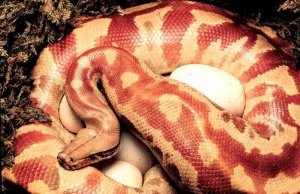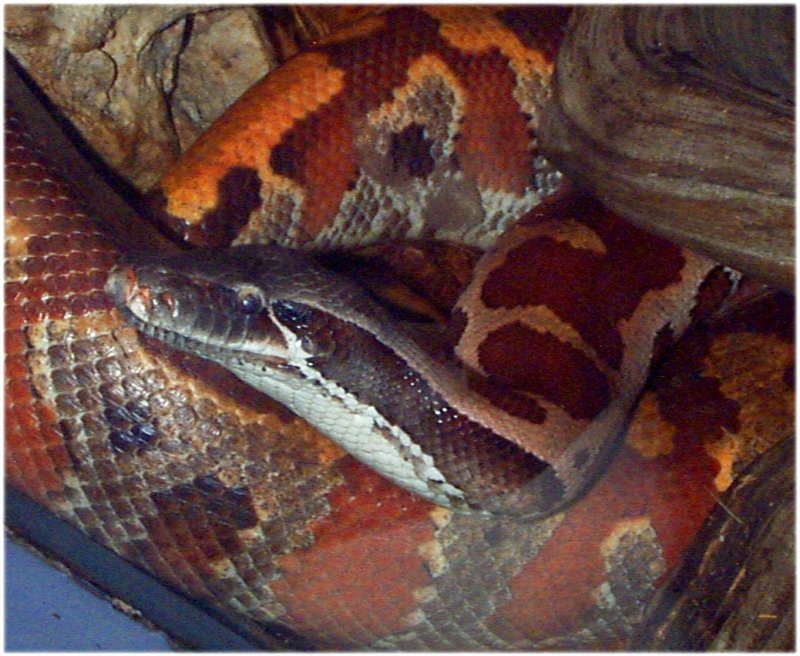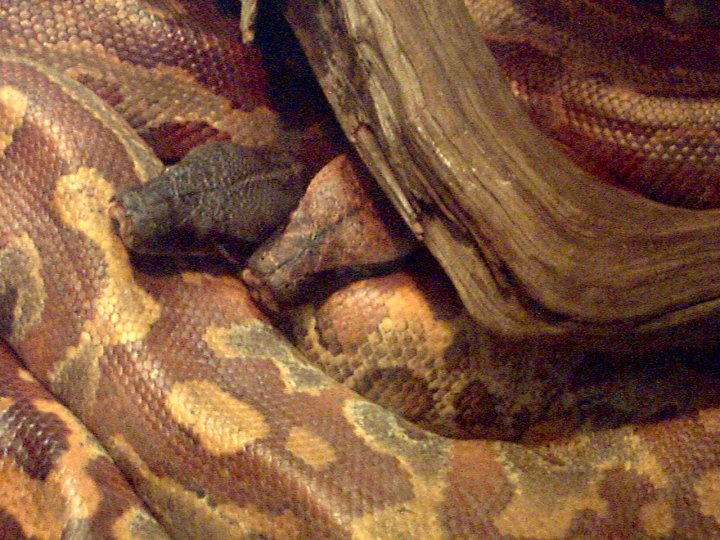Special anatomical,
physiological
or behavioral adaptations:
Blood pythons also have special features
that differentiate them from other snakes. These features
include: lower jaw suspension for large prey; upper and lower
jaws with palatine bones containing curved teeth for instant
hold on prey; internal pair of hind legs in the shape of stout
spurs that can leave a scratch in defense; these spurs are
also used by the male to hang onto a female during mating.
Evidence of pits in the roof of the mouth suggest that pythons
once were venomous snakes.
Pythons have heat-sensing pits on
the upper lip that help them
to detect their warm-blooded prey. Blood pythons have only
two large pits on each side. You can easily see these pits
in the large picture at the top of this
page.
|

Brooding female
courtesy of David
Barker
With the ability to constrict their
muscles, blood pythons can protect and defend themselves and
their young. When brooding females lay eggs, they will coil
up into a tight ball over the nest generating heat needed
for incubation. Because of the energy used in shivering,
a female may lose half her body weight during the incubation
period. Also, the constricting feature aids the blood python
in killing its prey by suffocation.
|


